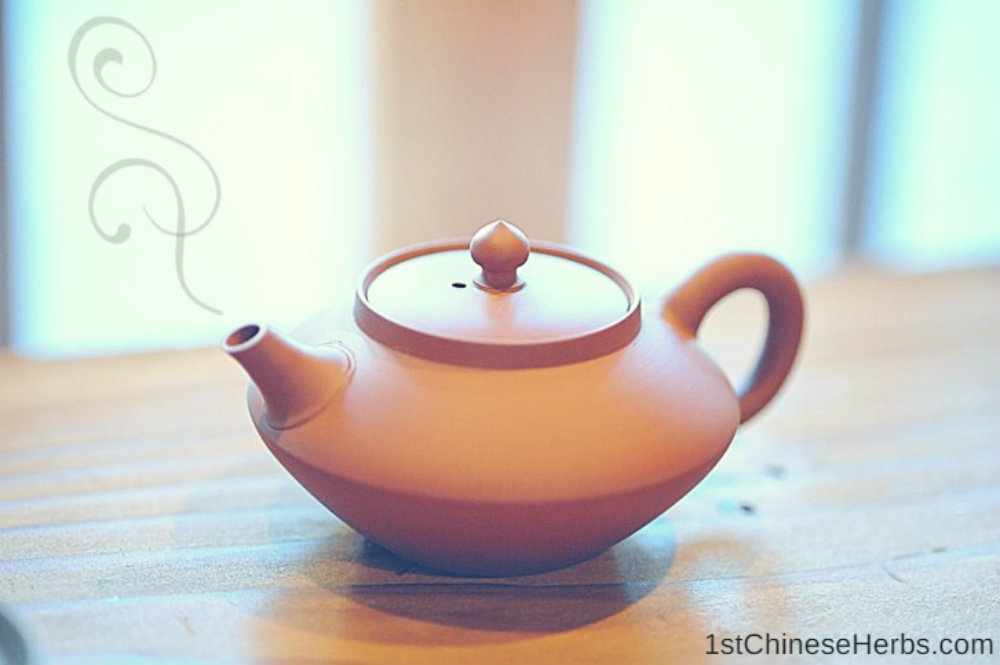Herbal teas and infusions are a great way to get your daily dose of herbs in. Check out our Herbal Teas and Infusions page to learn more about the benefits of tea!
How to Brew a Flawless Cup of Tea
Have you been brewing tea for years but can't seem to find just the right way to brew? Or maybe you are new to teas and infusions and want some guidance. Either way, you've come to the right place! Try our easy, fool-proof method on how to brew a flawless cup of tea!
Step 1: Get your tea and cold water prepared.
Your tea might already come in teabags. If you have bulk herbs or loose leaf tea (like in the second picture), you will need a tea ball strainer or reusable tea bag to put the leaves into for straining. The amount of water should reflect how much tea you want to drink, plus a little extra. If you make too much, you can always store the rest in the fridge for some iced tea later.

Step 2: Preheat your teapot.
Boil enough water to fill your teapot one and one half times. Pour the hot water into the teapot and swish it around in order to heat the teapot up. Once the teapot is pre-heated, pour out the used water. Many people do not do this, but without doing this step, your tea becomes lukewarm quickly. This will keep your tea hotter for much longer.

Step 3: Measure out your tea.
Measure one teaspoon (1 tsp.) of loose tea for every cup you plan to pour, plus one for the pot. Trust me on this... it will make a difference! To brew a stronger tea, add a few extra teaspoons.
 Step 4: Boil the water.
Step 4: Boil the water.
For black teas, bring the water to a full boil. Remove the tea kettle from the heat as soon as the water begins to boil. Boiling all the oxygen out of the water will flatten the tea's flavor. For more delicate green teas, remove the tea kettle from the heat before the water begins boiling, at 165-170 degrees F (74-77 degrees C). You can also add one part cold water to four parts boiling water to cool it to the ideal temperature range.

Step 5: Pour a small amount of hot water on the tea leaves.
Before steeping, pour a small amount of the hot water over the tea leaves to allow them to bloom (open up) and release some of their bitter tannins. Drain immediately.
Step 6: Fill the teapot with boiling water.
With your tea already in your teapot, fill the teapot with the boiling water. Keep the spout of the kettle close to the teapot while you pour so the water does not cool as you pour it in. Cover the teapot and leave the tea to brew. See our tea brewing times chart below for the best times for your type of tea.

Step 7: Pour yourself a cup of tea.
When the tea is done steeping, pour yourself a cup. Avoid keeping the leaves in contact with the hot water as over-brewed tea will become bitter and unpleasant.

Tea Brewing Times
Different teas have different brewing or steeping times. Some teas have short times, other have longer times. This chart can help you decide how long to brew each type.
| Tea Type | Origin | Brewing Time | Properties & Flavor |
| Assam | North India | 3-5 minutes | Full-bodied with a rich, smooth, malty flavor. If you have never tried this tea before, you are really missing something. |
| Ceylon | Sri Lanka | 3-5 minutes | Brisk, full-flavor with a bright color. A wonderful taste for the savvy tea drinker. |
| Darjeeling | North India | 3-5 minutes | Delicate, slightly astringent flavor. |
| Earl Grey | China | 3-5 minutes | Flavored with the natural oil of citrus bergamot fruit. If you are a Star Trek fan, this is what Captain Picard orders from the replicator. |
| Gunpowder | China | 3-5 minutes | A clear amber liquor with a sweet aroma and a pungent taste. The reason this tea is called gunpowder is because the leaves are rolled into small, pellet-like balls. |
| Oolong | China, Taiwan | 5-7 minutes | Subtle, delicate, lightly flavored tea. Oolong is the tea that is usually served at Chinese restaurants. |
| Rooibos | South Africa | 2-4 minutes | Rooibos has captured the sun's energy and the soil's nutrients and given them to us in the form of the vitamins, minerals, chlorophyll, enzymes, and most especially the enzyme superoxide dismutase (SOD) which appears to be the prime scavenger of free radicals. |
| Shu Mee White | China | 1-3 minutes | White tea is the least processed tea. The leaves are simply withered and dried. White tea has a higher level of polyphenols than green tea. This tea brews to a light red color has a slightly sweet taste with no "grassy" undertones. |
Please note: that you can make a tea using powdered herbs.
When making a tea, this powder will not dissolve entirely in your cup. It will leave a residue of powder in the bottom.
This powder is made of the whole herb and is NOT an extract.

